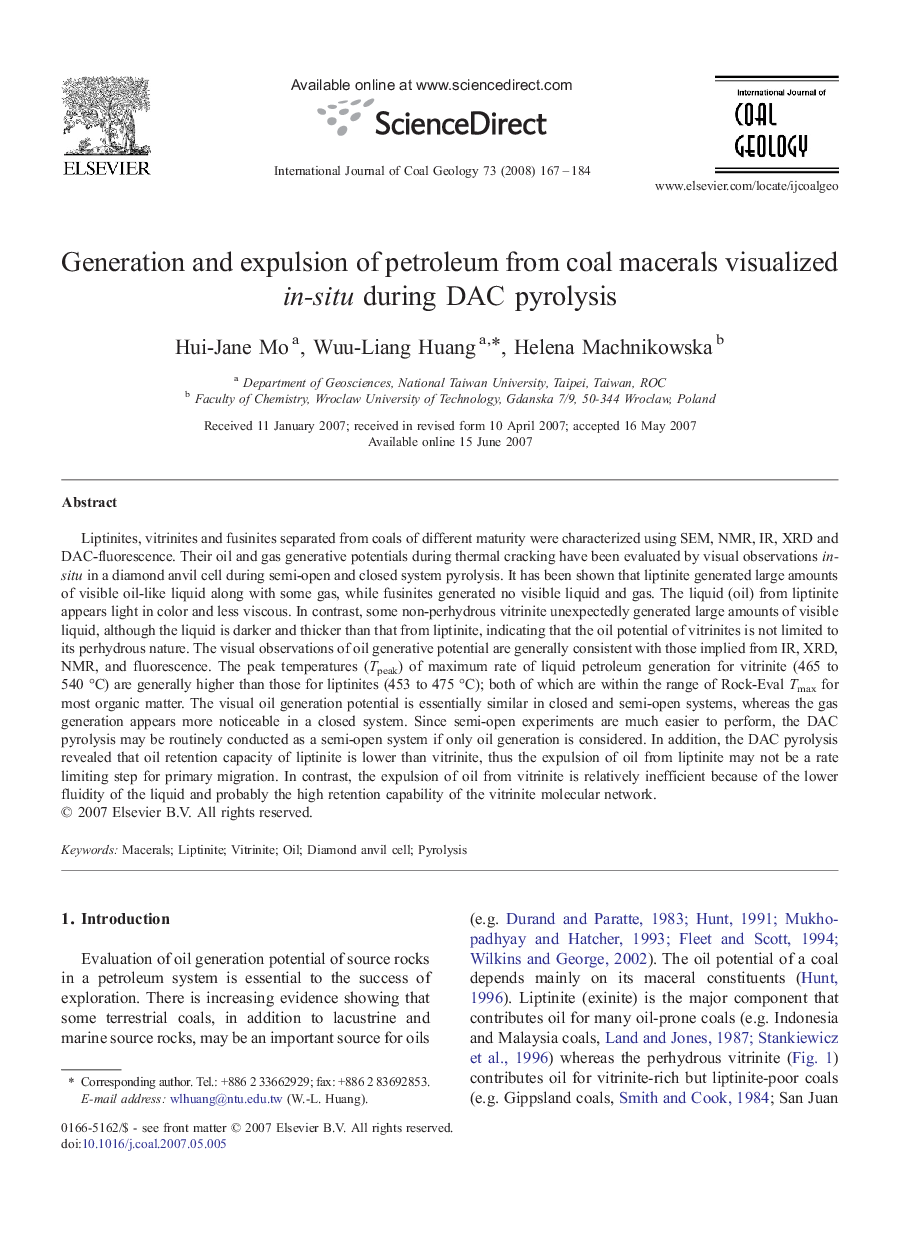| Article ID | Journal | Published Year | Pages | File Type |
|---|---|---|---|---|
| 1753934 | International Journal of Coal Geology | 2008 | 18 Pages |
Liptinites, vitrinites and fusinites separated from coals of different maturity were characterized using SEM, NMR, IR, XRD and DAC-fluorescence. Their oil and gas generative potentials during thermal cracking have been evaluated by visual observations in-situ in a diamond anvil cell during semi-open and closed system pyrolysis. It has been shown that liptinite generated large amounts of visible oil-like liquid along with some gas, while fusinites generated no visible liquid and gas. The liquid (oil) from liptinite appears light in color and less viscous. In contrast, some non-perhydrous vitrinite unexpectedly generated large amounts of visible liquid, although the liquid is darker and thicker than that from liptinite, indicating that the oil potential of vitrinites is not limited to its perhydrous nature. The visual observations of oil generative potential are generally consistent with those implied from IR, XRD, NMR, and fluorescence. The peak temperatures (Tpeak) of maximum rate of liquid petroleum generation for vitrinite (465 to 540 °C) are generally higher than those for liptinites (453 to 475 °C); both of which are within the range of Rock-Eval Tmax for most organic matter. The visual oil generation potential is essentially similar in closed and semi-open systems, whereas the gas generation appears more noticeable in a closed system. Since semi-open experiments are much easier to perform, the DAC pyrolysis may be routinely conducted as a semi-open system if only oil generation is considered. In addition, the DAC pyrolysis revealed that oil retention capacity of liptinite is lower than vitrinite, thus the expulsion of oil from liptinite may not be a rate limiting step for primary migration. In contrast, the expulsion of oil from vitrinite is relatively inefficient because of the lower fluidity of the liquid and probably the high retention capability of the vitrinite molecular network.
